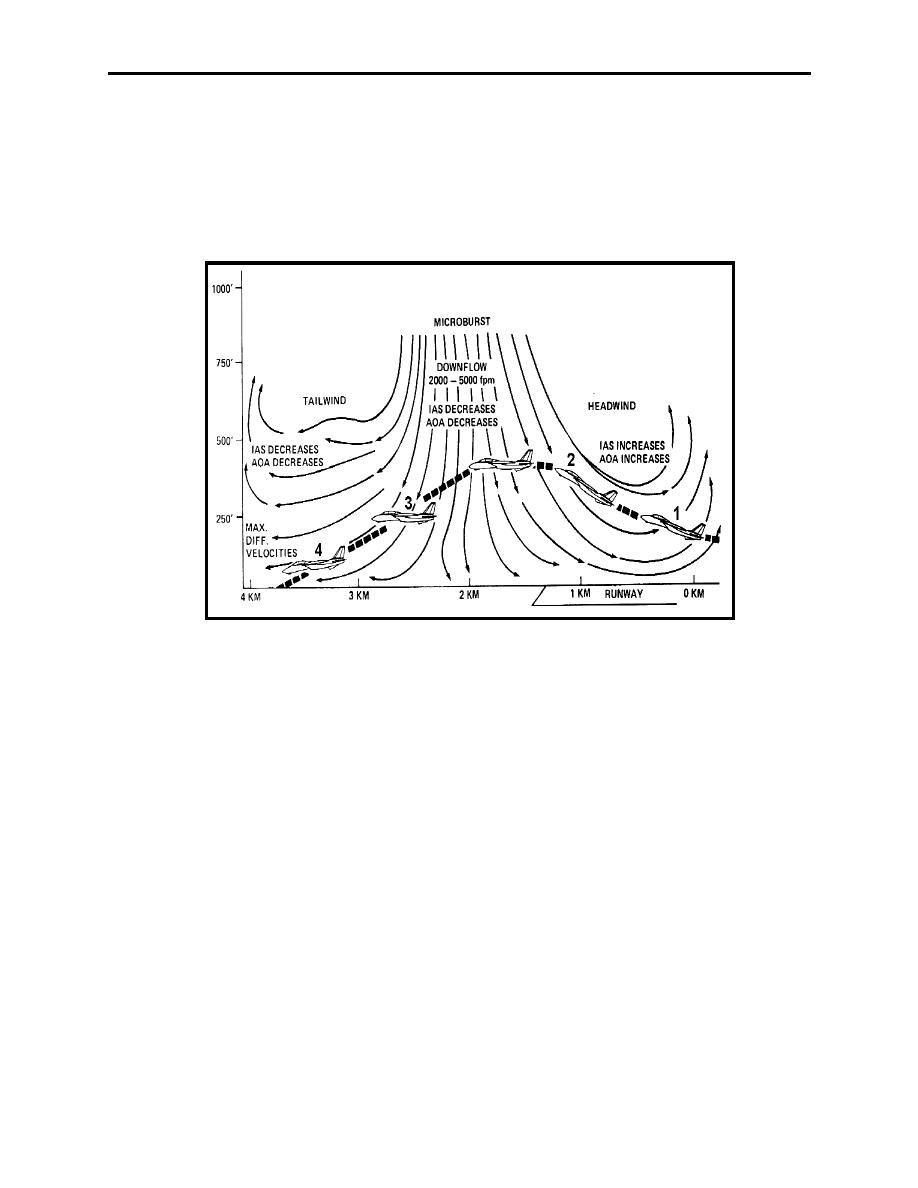 |
|||
|
|
|||
|
Page Title:
Methods of Microburst Detection |
|
||
| ||||||||||
|
|  AVIATION WEATHER
CHAPTER FOUR
here until the reaching position 3. At this point, the aircraft will be in a severe downdraft, and a
transition from a strong headwind to a strong tailwind will occur (position 4). The resulting loss
of indicated airspeed and lift will cause the aircraft to pitch down and lose altitude. At this point
(or earlier), the correct reaction would be to add maximum power and establish a climbing
attitude on the vertical gyro. Chances of successful recovery depend on reaction time, aircraft
performance capabilities, and the altitude of the aircraft.
Figure 4-8 Attitude Changes with Microburst Penetration
If you encounter a microburst on final approach or on takeoff, the results could be disastrous.
The best course of action is to avoid microbursts at all costs. This point cannot be over
emphasized. You must always be alert for the warning signs of a microburst. Remember, avoid,
avoid, avoid. You may only get one chance to make a life or death decision.
Methods of Microburst Detection
Microbursts are such a dangerous phenomenon, early detection is vital to mishap prevention. In
most microburst accidents warning signs have been ignored, misinterpreted, or misunderstood.
You must evaluate the warning signs and make a decision quickly and decisively. Here are some
very important clues indicating the presence of microburst.
Ground-based Doppler radar now has the capability to accurately detect hazards that can take the
form of microbursts, tornadoes, and other low-level wind shear activity. Therefore, when
weather observations or recordings mention low-level wind shear, or call for gusty winds, heavy
rain, or severe thunderstorms, be aware the potential for microburst activity exists.
Thunderstorms
4-9
|
|
Privacy Statement - Press Release - Copyright Information. - Contact Us |